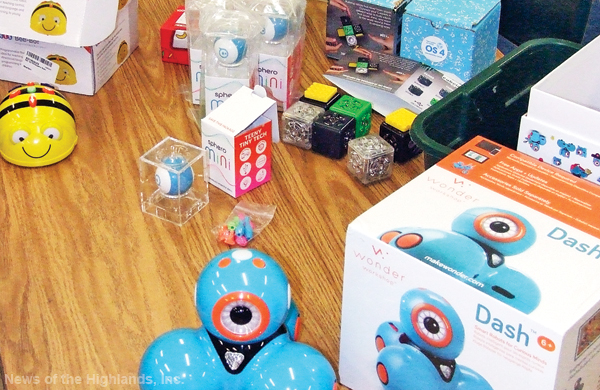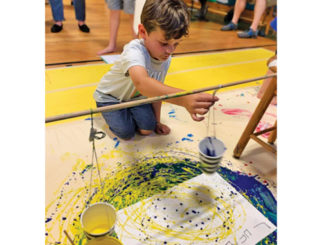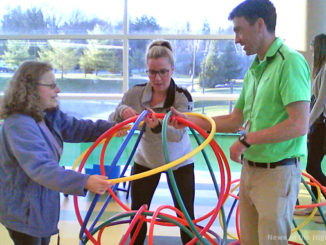
When Willow Avenue Elementary School opened its doors for the first day of school, it also opened the door to the first district classroom dedicated to the STEAM (science, technology, engineering, arts, mathematics) initiative.
Last year, when each building selected a STEAM captain, third grade science teacher Eleonora Panzanaro was chosen to represent Willow Avenue.
“Our job was to try to bring STEAM into the building,” Panzanaro said. “We worked throughout the year and went to a lot of workshops and to different schools that are very progressive as far as the STEAM initiative goes.”
By the end of the school year, each captain was charged with bringing STEAM into their respective buildings. Panzanaro took advantage of the fact Willow was down a class and had a room available.
Much like the school’s computer lab, teachers can sign up and bring their classes to the STEAM room to conduct an activity. A sign-up sheet, on the door, will allow teachers to use the room when it’s available. Panzanaro expects to be in the room, with her students, between four and six times a week. She estimates other teachers will use it twice a week.
“When you start a STEAM activity, it’s not usually done in a day because it’s a whole process,” said Panzanaro.
Last year, she had her students film and broadcast a weather report. Titled “Willow’s Wonderful World of Weather,” the students would produce a weekly report for the weekend, which would be broadcast during the Friday morning announcements. The STEAM room continues to employ camera and lighting equipment, as well as a green screen.
When figuring out what else to include in the room, Panzanaro had to consider the age range of students. Electronic devices like Bee Pods and Dash are suitable for kindergarteners to fourth graders.
In the building section, a Lego wall is set at the right height to accommodate all students. There are also Magnatiles and wooden pieces to build bridges and whatever else the children imagine. Mats, on the floor, allow the children to build bridges over the roads and use Matchbox cars to ensure their bridge is structurally sound.
The room contains microscopes, a kaleidoscope area, and even a bicycle which serves as a generator.
In the STEAM room, students are given an objective and it’s up to them to decide how to go about solving the problem.
“Sometimes there is no set solution, so the kids have to figure out what it is,” said Panzanaro.
The room also helps tie into the social emotional curriculum because the students learn to collaborate with each other.


